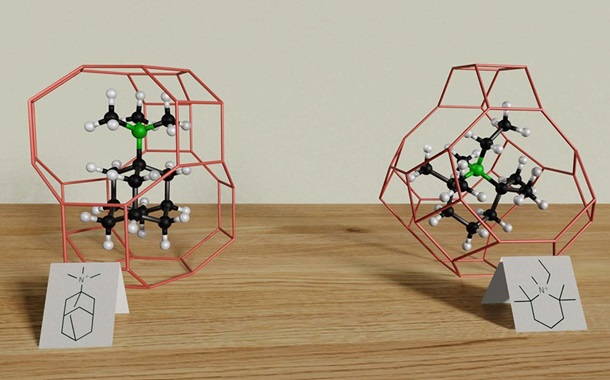Green Preservation of Goatskin to Deplete Chloride from Tannery Wastewater
Downloads
Globally, in wet-salting preservation, common salt (sodium chloride, NaCl) is generally used for the raw animal skin, which emits a huge amount of chloride-containing wastewater, affecting groundwater quality and human and plant life. Chlorides in tannery wastewater encourage salt-free or less-salt preservation methods of raw skin. In this study, an alternative salt-free "green method" has been described for goatskin preservation with rapidly growing obnoxious weeds like Sphagneticola trilobata leaf. The ‘green leaf paste' was applied on the flesh side of the raw goatskin and compared with the conventional wet-salting (50% NaCl) method for 28 days. Different parameters of both samples, like moisture, nitrogen, hydrothermal stability, and bacterial growth, were periodically assessed and compared. Shoe upper leather was produced from both preserved goatskins. After comparing with standards, the physical properties like tensile strength, elongation at break, and bursting strength satisfied the standard requirements. SEM images showed no deterioration to the fiber structure of both samples. Moreover, the suggested method reduces the pollution loads: chloride, total dissolved solids, biochemical oxygen demand, and chemical oxygen demand by 98.04%, 92.9%, 90.2%, and 85.5%, respectively. The overall assessment recommends that the salt-free ‘green method' utilizing S. trilobata leaf paste could be an attractive system over the conventional wet-salting method.
Doi:10.28991/HIJ-2021-02-02-03
Full Text:PDF
Downloads
Balada, E. H., Marmer, W. N., Kolomaznik, K., Cooke, P. H., & Dudley, R. L. (2008). Mathematical model of raw hide curing with brine. Journal of the American Leather Chemists Association, 103 (5), 167-173.
Enquahone, S., van Marle, G., Gessesse, A., & Simachew, A. (2020). Molecular identification and evaluation of the impact of red heat damage causing halophilic microbes on salted hide and skin. International Biodeterioration & Biodegradation, 150, 104940. doi:10.1016/j.ibiod.2020.104940.
Yilmaz, E., & Birbir, E. (2019). Characterization of halotolerant Bacillus species isolated from salt samples collected from leather factories in Turkey. Journal of the American Leather Chemists Association, 14 (4), 118-130.
Caglayan, P., Birbir, M., & Ventosa, A. (2018). A Survey Study to Detect Problems on Salted Hides and Skins. In: ICAMS 2018-7th International Conference on Advanced Materials and Systems, 409-414. doi:10.24264/icams-2018.viii.4.
Kanagaraj, J., Babu, N. K. C., Sadulla, S., Suseela Rajkumar, G., Visalakshi, V., & Kumar, N.C. (2001). Cleaner techniques for the preservation of raw goat skins. Journal of Cleaner Production, 9(3), 261–268. doi:10.1016/s0959-6526(00)00060-3.
Kanagaraj, J., Velappan, K. C., Babu, N. K. C., & Sadulla, S. (2006). Solid Wastes Generation in the Leather Industry and Its Utilization for Cleaner Environment. ChemInform, 37(49). doi:10.1002/chin.200649273.
Roddy, W. T. (1942). The coagulable proteins of animal skin, I: A histological study of the coagulable proteins of animal skin. Journal of American Leather Chemists' Association 37, 410-416.
Waters P. J., L. J. Stephen, and Sunridge. (1981). Controlled drying. Journal of the American Leather Chemists Association, 65 (41), 1-14.
Kanagaraj, J., John Sundar, V., Muralidharan, C., & Sadulla, S. (2005). Alternatives to sodium chloride in prevention of skin protein degradation”a case study. Journal of Cleaner Production, 13(8), 825–831. doi:10.1016/j.jclepro.2004.02.040.
Vankar, P. S., & Dwivedi, A. K. (2009). Sulphates for skin preservation- A novel approach to reduce tannery effluent salinity hazards. Journal of Hazardous Materials, 163(1), 207–212. doi:10.1016/j.jhazmat.2008.06.090.
Kanagaraj, J., Selvi, A. T., Senthilvelan, T., Chandra Babu, N. K., & Chandrasekar, B. (2014). Evaluation of New Bacteriocin as a Potential Short-Term Preservative for Goat Skin. American Journal of Microbiological Research, 2(3), 86–93. doi:10.12691/ajmr-2-3-2.
Munz, K.H. (2007). Silicates for Raw hide curing. Journal of the American Leather Chemists Association, 102 (1), 16-21.
Babu, N. K.C., Karthikeyan, R., Kumari, B. S., Ramesh, R., Shanthi, C., & Sadulla, S. (2012). A systematic study on the role of chilling temperatures on the curing efficacy of hides and skins. Journal of the American Leather Chemists Association, 107(11), 362-374.
Gudro, I., Valeika, V., & Sirvaitytč—, J. (2014). Short Term Preservation of Hide Using Vacuum: Influence on Properties of Hide and of Processed Leather. PLOS ONE, 9(11), e112783. doi:10.1371/journal.pone.0112783.
Sathish, M., Madhan, B., Saravanan, P., Raghava Rao, J., and Nair, B. U. (2013). Dry ice–an eco-friendly alternative for ammonium reduction in leather manufacturing. Journal of Cleaner Production, 54, 289–295. doi:10.1016/j.jclepro.2013.04.046.
Kanagaraj, J., Babu, N. C., Sadulla, S., Rajkumar, G. S., Visalakshi, V., & Chandrakumar, N. (2000). A new approach to less-salt preservation of raw skin/hide. Journal of the American Leather Chemists Association, 95(10), 368-374.
Hashem, M. A., Momen, M. A., & Hasan, M. (2018). Leaf paste aided goat skin preservation: Significant chloride reduction in tannery. Journal of Environmental Chemical Engineering, 6(4), 4423–4428. doi:10.1016/j.jece.2018.06.050.
Selvi, A. T., Brindha, V., Vedaraman, N., Kanagaraj, J., Sundar, V. J., Khambhaty, Y., & Saravanan, P. (2020). Eco-friendly curing of hides/ skins using phyto based Citrus limon leaves paste. Journal of Cleaner Production, 247, 119117. doi:10.1016/j.jclepro.2019.119117.
Nur-A-Tomal, M. S., Hashem, M. A., Zahin, M. E. H., Pulok, M. L. H., Das, M. R., & Mim, S. (2020). Goatskin preservation with plant oil: significant chloride reduction in tannery wastewater. Environmental Science and Pollution Research. doi:10.1007/s11356-020-11311-z.
Mohammed, S. A., Madhan, B., Demissie, B. A., Velappan, B., & Tamil Selvi, A. (2016). Rumex abyssinicus (mekmeko) Ethiopian plant material for preservation of goat skins: Approach for cleaner leather manufacture. Journal of Cleaner Production, 133, 1043–1052. doi:10.1016/j.jclepro.2016.06.043.
100 of the World's Worst Invasive Alien Species: A Selection from The Global Invasive Species Database. (2019). Encyclopedia of Biological Invasions, 715–716. doi:10.1525/9780520948433-159.
Toppo, K. I., Gupta, S. H. U. B. H. A., Karkun, D. E. E. P. A. K., Agrawal, S., & Kumar, A. N. I. L. (2013). Antimicrobial activity of Sphagneticola trilobata (L.) Pruski, against some human pathogenic bacteria and fungi. The Bioscan, 8(2), 695-700.
BIS 1016-1956. Bureau of Indian Standards. (1971) Chemical Testing of Leather. 2-80. New Delhi, India. Available online: https://law.resource.org/pub/in/bis/S02/is.582.1970.pdf (accessed on March 2021).
ISO 3380. (2015). Leather-Physical and mechanical tests-Determination of shrinkage temperature up to 100°C (SATRA, ISO 3380), Geneva Switzerland.
ISO 3376. (2011). Leather-Physical and mechanical tests-Determination of tensile strength and percentage extension (SATRA, ISO 3376). Geneva Switzerland.
ISO 3379. (2015). Leather-Determination of distension and strength of surface (Ball burst method) (SATRA, ISO 3379). Geneva Switzerland.
American Public Health Association. (2012). Standard Methods for the Examination of Water and Wastewater. APHA, Washington, D.C., United States.
Covington, A. D. (2009). Tanning chemistry: the science of leather. Royal Society of Chemistry, London, United Kingdom.
- This work (including HTML and PDF Files) is licensed under a Creative Commons Attribution 4.0 International License.






















